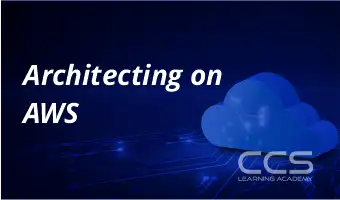Filter by Topic
Filter by Vendor
Emotional Intelligence
Course Description Emotional intelligence, also referred to as Emotional Quotient …
PECB Certified ISO 31000 Risk Manager eLearning Training Course
Course Description As the world is moving faster than ever, …
What you'll learn
Understand the risk management concepts, approaches, methods, and techniques
Learn how to establish a risk management framework in the context of an organization
Learn how to apply the ISO 31000 risk management process in an organization
Understand the basic approaches, methods, and practices used to integrate risk management in an organization
PECB Certified ISO/IEC 27001 Lead Auditor eLearning Training Course
Course Description As the world is moving faster than ever, …
What you'll learn
Understand the operations of an Information Security Management System based on ISO/IEC 27001
Acknowledge the correlation between ISO/IEC 27001, ISO/IEC 27002, and other standards and regulatory frameworks
Understand an auditor’s role to plan, lead, and follow-up on a management system audit in accordance with ISO 19011
Learn how to lead an audit and audit team
Learn how to interpret the requirements of ISO/IEC 27001 in the context of an ISMS audit
Acquire the competencies of an auditor to plan an audit, lead an audit, draft reports, and follow-up on an audit in compliance with ISO 19011
PECB Certified ISO/IEC 27001 Lead Implementer eLearning Training Course
Course Description As the world is moving faster than ever, …
What you'll learn
Gain a comprehensive understanding of the concepts, approaches, methods, and techniques used for the implementation and effective management of an ISMS
Acknowledge the correlation between ISO/IEC 27001, ISO/IEC 27002, and other standards and regulatory frameworks
Understand the operation of an information security management system and its processes based on ISO/IEC 27001
Learn how to interpret and implement the requirements of ISO/ IEC 27001 in the specific context of an organization
Acquire the necessary knowledge to support an organization in effectively planning, implementing, managing, monitoring, and maintaining an ISMS
GIAC Security Leadership (GSLC)
Course Description The GIAC Security Leadership (GSLC) certification validates a …
Introduction to Programming & Coding | Java Basics for Non-Developers (TTCODE101-J)
This course is a beginner level course for students who …
What you'll learn
Basic concepts of programming
Fundamentals of Java
Setting up and getting familiar with development environment, including IDE’s
Understanding object oriented development
Learning how to make classes, methods and objects
Learning loops, their importance and usage
Use of conditions and regular expressions
Learning importance of lists and arrays
Basic GUI skills
Error and exception handling
Formatting output and formatter class
Analyze and Visualize Data using Tableau
Course Description: The Analyze and Visualize Data using Tableau Certification …
What you'll learn
Basics about Tableau
How to connect, organize and slice data using Tableau
How to use multiple measures in a view
How learners can successfully show the relationship between various numerical values
How to map and customize data
How to view specific data
How to use quick table calculations to analyze the data in Tableau
How to use basic and advanced calculations in Tableau
How to extract data
What Tableau geocoding is
How to create using parameters
How to make dashboards and stories
Using Tableau to generate statistics
Using Tableau for forecasting
How to compare measures
How to assess the quality of data
How to use Tableau to perform exploratory analysis
Best practices while using Tableau
How to design visualizations for presentations
Architecting on AWS
Course Description In this authorized Amazon Web Services (AWS) course, …
What you'll learn
Making decisions based on the AWS-recommended architectural principles and best practices
Leveraging AWS services to make your infrastructure scalable, reliable, and highly available
Leveraging AWS managed services to enable greater flexibility and resiliency in an infrastructure
Making an AWS-based infrastructure more efficient in order to increase performance and reduce costs
Using the Well-Architected Framework to improve architectures with AWS solutions
To reinforce this material, you will also explore case studies with a variety of AWS infrastructure designs and strategies.
After the course, you will be fully equipped to build and scale a more efficient and reliable IT solution on the AWS cloud environment.










